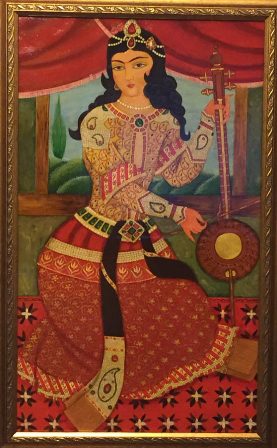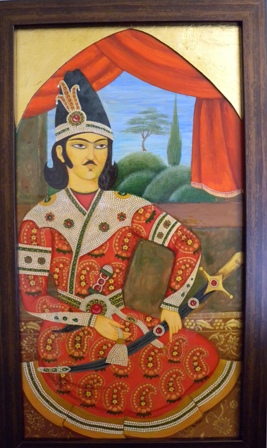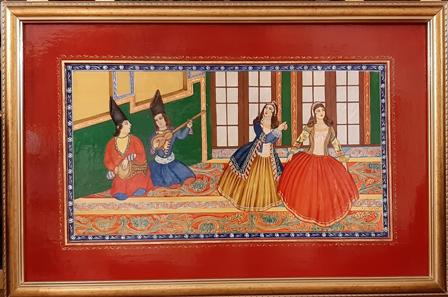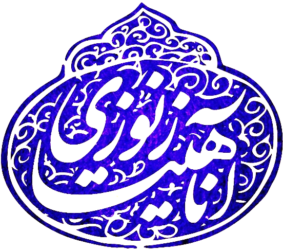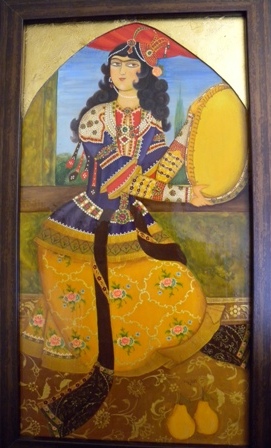
Qajar Painting
Qajar art refers to the art, architecture, and art-forms of the Qajar dynasty of the late Persian Empire, which lasted from 1781 to 1925 in Iran. Most notably, Qajar art is recognizable for its distinctive style of portraiture.
The roots of traditional Qajar painting can be found in the style of painting that arose during the preceding Safavid empire. During this time, there was a great deal of European influence on Persian culture, especially in the arts of the royalty and noble classes. In Zand dynasty & Qajar period this type of painting become closer to Persian art.
Most famous of the Qajar artworks are the portraits that were made of the various Persian Shahs.
The most famous painters of Qajar art, are :
Abu’l-Hasan Khan Ghaffari Kashani (1814–1866) , also known as Sani ol Molk. Miniature illustrations of a Persian version of One Thousand and One Nights, created by Sani ol Molk.
Mohammad Ghaffari, better known as Kamal-ol-Molk, the other famous painter of Qajar art. The paintings he did in this period, which lasted up until the assassination of Naser- eddin Shah, were portraits of important people, landscapes, paintings of royal camps and hunting grounds, and various parts of royal palaces.The most famous paintings of Kamal-ol-Molk is Hall of Mirrors & Baghdad(Jewish) Druid.
